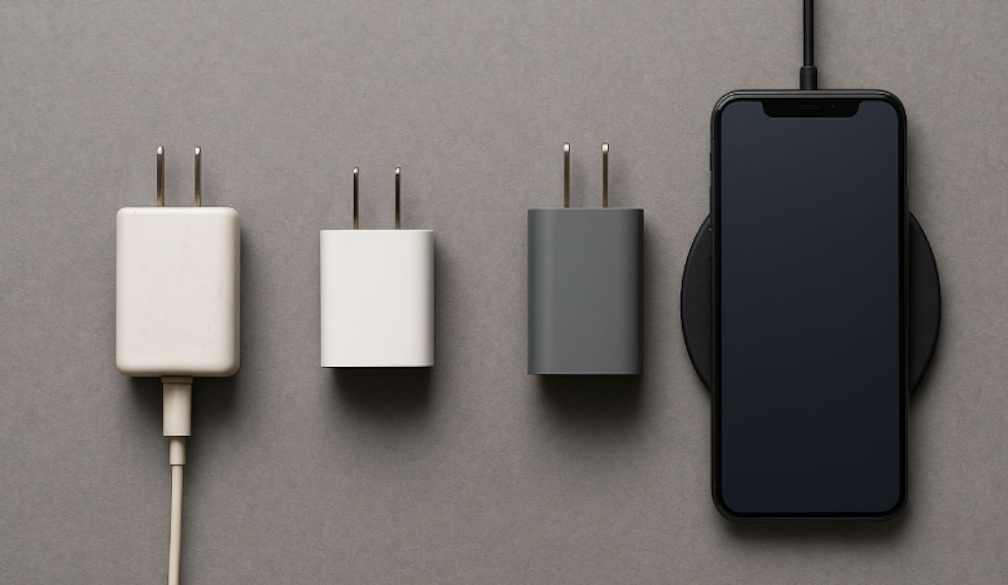The Evolution of Chargers: How Technology is Powering the Future

Staying connected is crucial in the fast-paced digital world of today, and chargers have turned out to be an important component of our daily lives. People can’t wait numerous hours to recharge their electronic devices completely. The introduction of modern technological advancements combined speed and sleek design with wireless charger capabilities for the market. The shift toward contemporary charging innovations, such as USB-C and GaN-based power and wireless power transfer delivery, has created more convenient features while boosting efficiency levels.
This article looks at charging technology development while examining both the benefits along the concerns involved in fast charging and the emerging sustainable wireless power systems that will define future developments.
From Traditional to Modern Chargers
People spent considerable time during the early mobile phone eras as they attempted to recharge their devices. The traditional wired power adapter devices required several hours to complete charging a mobile phone while having large sizes and lower efficiency rates.
The development of better batteries made charging technologies evolve. USB charging systems transformed power delivery by enabling faster and more efficient electricity transmission, which shortened device recharge duration.
The Rise of USB-C and GaN Chargers
The adoption of USB-C represents a leading breakthrough in present-day charging technology. The innovations of USB-C, compared to earlier standards, include the ability to flip it correctly and provide more power while transferring data at faster speeds.
Modern laptops, smartphones, and other devices now use USB-C ports as their default charging interfaces because these ports offer universal usability and efficiency.
Revolutionizing Charging with GaN Technology
The charging technology industry has been revolutionized through the development of GaN (gallium nitride) chargers. GaN charger technology surpasses silicon-based chargers in size and efficiency while managing powerful output loads without creating dangerous heat production.
This technological advancement has led to the creation of compact, robust chargers that provide fast-charging operations with enhanced safety features.
Fast Charging: A Game-Changer or a Risk?
The fast-charging technology now allows us to transform our device power-up routines. Modern smartphones increase their battery charge to 50% within the time frame of 15–30 minutes. Two commonly used fast-charging technologies exist as Power Delivery (PD) and Quick Charge (QC) which enhance power transfer capabilities without harming battery longevity.
- Power Delivery (PD): A universal fast-charging standard functions at 100W to provide power for smartphones, tablets, and laptops because of its versatility. The PD standard controls voltage together with current parameters to provide both safety and efficiency during charging operations.
- Quick Charge (QC): Through Qualcomm's development, QC technology enables supported devices to charge fast when they receive increased voltage with temperature regulation features.
Does Fast Charging Harm Battery Health?
The main worry about quick battery charging relates to its effect on battery lifespan duration. The operation of lithium-ion batteries can be shortened when they experience high temperatures continuously. However, modern charging technologies incorporate:
- Smart Temperature Control: Regulates power input to prevent overheating.
- Battery Management Systems: Optimize charge cycles for longer battery lifespans.
Best Practices for Safe Fast Charging
To minimize battery wear and maximize efficiency, follow these tips:
- Users should use either original or certified chargers because improper safety features often appear in low-cost chargers.
- The heat from your surroundings will quicken the breakdown process of your battery when you charge it.
- Plugging your phone while it has reached full charge level can degrade its battery condition.
The Rise of Wireless and Sustainable Chargers
The Shift to Wireless Charging
The technology world has undergone a revolutionary adjustment in charging systems through wireless charging. Wireless charging technology became easier to use since smartphones along with smartwatches and electric vehicles, adopted this capability.
Devices utilize the standard Qi wireless charging mechanism to draw power from charging pads when located on top of them. Users no longer need to deal with cable messes or port deterioration since wireless charging eliminates these issues, thus providing a convenient experience.
The Move Towards Sustainable Charging
Sustainability represents the next step in charging technology development beyond current convenience needs. Solar-powered and eco-friendly chargers are newly famous as public environmental consciousness continues to rise.
Modern sustainable charging solutions turn renewable power sources such as solar energy, into electricity to eliminate dependence on traditional power grids. These eco-friendly charging solutions bring reliable power to outdoor locations without electricity grid access and in situations where blackouts occur.
Conclusion
The technology used for charging has experienced extraordinary progress by moving past slow traditional systems toward modern swift wireless alternatives and environmentally sustainable solutions. Through the implementation of USB-C and GaN technology along with Power Delivery and wireless charging functionality our modern devices receive new power abilities.

